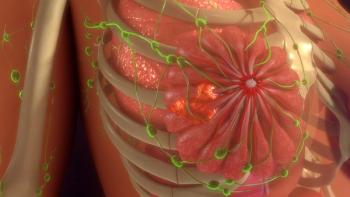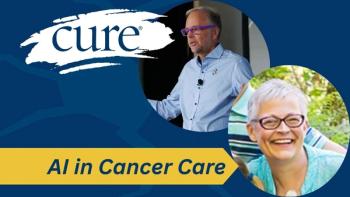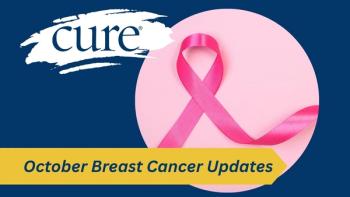
- Fall 2008
- Volume 7
- Issue 3
Active Recovery
Physical therapists Leslie Waltke and Beth Rothman talk about the benefits of rehabilitation and exercise during and after breast cancer treatment.
The treatment of breast cancer can produce a wide range of side effects, including weakness, fatigue, pain, and arm lymphedema (swelling caused by excess fluid build-up). Physical therapy can help reduce or eliminate many of these effects, yet physicians often neglect to recommend it to their patients.
To learn more about the benefits of physical therapy, CURE went to the source. Leslie J. Waltke, PT, is the Regional Cancer Rehabilitation Coordinator at Aurora Sinai Medical Center, Aurora Health Care, in Milwaukee, Wisconsin.
Beth Rothman, PT, CLT, a professor in the physical therapist assistant program at Union County College in Plainfield, New Jersey, incorporated physical therapy in her own treatment regimen after her breast cancer diagnosis.
“Physical therapy is one of the few aspects of cancer treatment in which the patient can play an active role,” notes Waltke. “It’s something they can do to make themselves better and stronger.”
CURE: When should a breast cancer patient consider physical therapy?
Leslie Waltke: It’s my firm belief that cancer rehabilitation should extend from diagnosis through survivorship. Because the first treatment for most breast cancer patients is surgery, I usually recommend that patients have their first rehab visit as soon as the drains come out. Sometimes patients will go through chemotherapy first, then surgery. In that case, it is appropriate for a patient to see a rehab specialist at the start of chemotherapy.
[All cancer treatments] will cause some kind of musculoskeletal or cardiovascular problems that need to be addressed with rehab, including limited range of motion, weakness, stiffness, swelling, and tissue tightness. All of these are treatable with physical therapy. There is no reason that 99 percent of people who have had breast surgery cannot get their arms and chests back to 100 percent of what they were able to do preoperatively.
CURE: Do the majority of breast cancer patients receive physical therapy?
Waltke: No. There are places, such as my facility, that target 100 percent of patients for a rehabilitation evaluation, and there are places where PT is not even on the radar screen.
A lot of patients may not need rehab [following surgery], so we may ask them to come back when they start radiation or chemotherapy. Just because they don’t have any post-operative problems doesn’t mean they won’t have future problems.
CURE: How can physical therapy benefit breast cancer patients?
Waltke: Physical therapy reduces or eliminates pain, which helps patients return to normal activity. Pain in itself can cause depression and fatigue, two things a cancer patient certainly doesn’t need. PT can also restore normal strength to the affected arm, helping the patient return to normal function.
Decades ago, when people were tired from their therapy, we told them to rest. Now we know that’s the worst advice we can give. Not only is it OK to exercise during radiation and chemotherapy, people should be. Those who do tend to be less nauseous, less fatigued, and less weak. They also tend to stay on their therapy regimen better, and have better life scores.
CURE: How can a treatment for breast cancer influence the type of physical therapy a patient will receive?
Waltke: It’s important to remember that we’re not treating the cancer, we’re treating the side effects of the cancer treatment. So whatever pops up from the surgery, chemotherapy, radiation, or breast reconstruction is what we are going to address. Depending on what treatment modality the patient is receiving, an experienced rehab therapist will know what to look for and what to predict. For example, we know that 90 percent of patients [who need further therapy after surgery] are going to become fatigued, so we’ll start chemo and radiation patients on a walking program, preferably before they even begin their treatment, to build their stamina, energy, and red cell count.
CURE: Is there much data proving the effectiveness of physical therapy in reducing the side effects of breast cancer treatment?
Waltke: There are numerous studies that advocate the use of exercise in rehabilitation for restoration of the arm after mastectomy, partial mastectomy, and certainly breast reconstruction. There is also a significant amount of data showing that exercise is strongly advocated during chemotherapy.
In 2004, the National Comprehensive Cancer Network said that the number one side effect of chemo is fatigue and the best treatment for that is exercise. Physicians finally heard from the top down that not only is exercise OK, but that patients should be doing this. So yes, the data are there, and we’re working on getting more.
CURE: How would you describe the role of the physical therapist as a member of the cancer care team?
Waltke: I would describe that role as crucial. Successful cancer care is not just eliminating the disease progression; we must also get patients back to their previous comfort and activity levels. So in my opinion, you can’t treat cancer successfully without the involvement of a cancer rehab specialist.
CURE: Please tell us briefly about your breast cancer experience.
Beth Rothman: I had stage 1 breast cancer in my right breast, which was discovered during a routine mammogram. A sentinel node biopsy was performed, and it was negative. I had a radical mastectomy and latissimus dorsi flap reconstruction.
I am BRCA2-positive and I also had Oncotype DX done. Because of my [Oncotype DX recurrence] score, I had chemotherapy—four cycles of Taxotere and Cytoxan over three months. Shortly thereafter, I had the same surgery and reconstruction done prophylactically on my left breast.
CURE: At what point did you begin physical therapy?
Rothman: Because I’m a physical therapist, I did a lot of stuff on my own. I began a walking program almost from the day I started chemotherapy. I walked two to three miles five times a week every cycle, starting at about the sixth or seventh day.
CURE: Why did you feel that was important?
Rothman: I just felt that if I kept physically fit, I would have a better time with recovery, which turned out to be very much the case. My doctors were all very surprised at how fast I was up and moving around. I also worked throughout my treatment.
CURE: How did being a physical therapist benefit you during your treatment and recovery?
Rothman: Because I understood what was going on [with my body] from a physical therapy perspective, I was able to avoid doing things that were painful. Following my second surgery, I was up and around as soon as the anesthesia wore off, and once I got home, I didn’t really need pain killers. I believe that’s because I knew how to move properly.
CURE: Did you also work with another physical therapist?
Rothman: Not for the first surgery, because I knew what to do. But following my second surgery I worked with Becky Keller, a physical therapist at the Princeton Medical Center, to develop protocols for the fitness center there for women who have had the same surgery I had. So I was both a patient and a co-therapist. We did an evaluation and figured out the best exercises that trainers could do with patients once they are discharged from physical therapy.
CURE: Did Becky assist you with your own physical therapy?
Rothman: Yes, because following my second surgery I overstretched and hurt myself. That’s one of the reasons I believe that breast cancer patients who undergo surgery should have one or two sessions with a physical therapist post-op—so they don’t do what I did.
I also believe a pre-op visit is useful to teach women what to expect from the muscle redirection during reconstruction, and how to move after surgery in the face of ensuing decreased mobility. A pre-op program similar to those done for patients undergoing joint replacement surgery could decrease a breast cancer patient’s hospital stay and make her time in the hospital more comfortable and less frightening.
CURE: What did your physical therapy entail?
Rothman: We did some manual stretching and some myofascial release, and Becky did a lot of deep friction massage on my scar. Later we did some strengthening and stabilization exercises.
CURE: How has being a cancer survivor influenced your work as a physical therapist?
Rothman: It has changed my life. I’m getting my certification so I can treat women with lymphedema, and I’m working to establish a PT practice specifically for women who have had breast cancer. My specialty for the past 20 years has been home care and geriatrics, so I’m totally changing what I do.
CURE: Would you encourage all women who undergo treatment for breast cancer to bring up the issue of physical therapy with their physicians?
Rothman: Absolutely, because there is so much that physical therapy can do. I believe I was up and around faster because I knew what to do, and my pain was much less than typical because I knew what not to do.
Articles in this issue
about 17 years ago
Message from the CURE Staffabout 17 years ago
Understanding Preventive Mastectomyabout 17 years ago
International Thyroid Cancer Survivors' Conferenceabout 17 years ago
Breaking Down TCMabout 17 years ago
Olympian Postpones Treatment to Competeabout 17 years ago
New Pharmacy Breed Offers Special Attention, Drawbacks to Patientsabout 17 years ago
www.SharingHope.tvabout 17 years ago
Q&A: Vitamin Dabout 17 years ago
Web Exclusive: Preventing Breast Cancerabout 17 years ago
Never Fear




